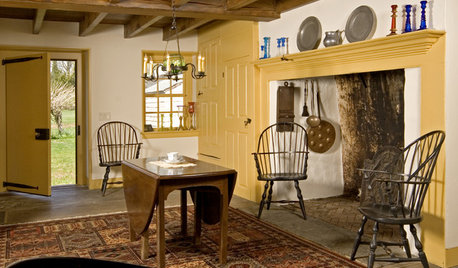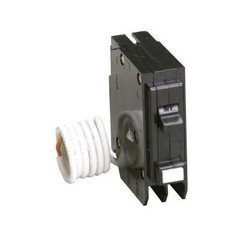So why is it bad to have the ground carry the neutral load?
donnellyjt
16 years ago
Featured Answer
Sort by:Oldest
Comments (75)
brickeyee
16 years agolast modified: 9 years agodkenny
16 years agolast modified: 9 years agoRelated Discussions
Why is planting in the ground so awful
Comments (36)you live and learn.... I grew up in a different part of world. Our soil was (still is ) volcanic, quite enriched with minerals. Our "fertilizer" means buying sheep manure and mixed on the ground before the season starts or place very little under the plants (your parent explain to you it will burn the plant if it is too much) If the soil has been used such a long time or hasn't been used for years we would just go and purchase "pine forest soil" (equivalent to humus). you leave the water hose on for a while and move it to the different part of the garden (water comes from the mountain for free. Ants are sacred (because those are so harmless and so hardworking) and you can play with them by letting them climb on your hands. If you asked me something about gardening my advices would be based on those experiences. I moved to houston and learned over the years that everything is different! I dug a little area in the backyard to plant some stuff. Most of them did very poorly. Aggressive St. Augustine grasses took over some garden patches. I have learned that ants bite and leave you with a very nasty bite. Hard clay is impossible to till, there are not many places you can get sheep manure, there is no definition of "one tractor full forest soil" etc. You PAY for the water and it is city water with chlorine! Eventually I started with one raised bed and grew giant tomatoes. I purchased "vegetable garden mix" from Lowes and mixed with composted manure ;voila! wonderful tomatoes. They stop producing around mid June and I tought " maybe they are big in size but small in production. It must be an American thing. After 10 years in U.S, several attempt to being a Gardner, We have let one Gardner to take care of the soil for the new raised beds and the result: enriched top soil is not for medium growing and soil needs to be replaced! With what? Exactly what we were using years and years ago in the other side of the world with new definition: Potting soil (70% forest material, nitrogen enrichment etc...) duh! read the label dumb lady! Isn't it similar to the "forest soil" Composted cow manure (isn't that the same thing placing manure in earlier in the soil) so there is not only good but easier to handle manure exist some peat most (I still have no clue what it is but I add 5% anyway since it makes the soil softer) Since taste comes first (at least for me ) I stop right there! no more addition. If it is not growing in there It is not meant to be for me. Tomato production stops around June not because those are American plants because of Houston HEAT. I just wanted to tell you what my story is. Overall everyone has a different experience. Unless you are with someone next door who is doing the most sustainable gardening for years you will make a lot of mistake and get a lot of different opinion from different experience. Spending money on gardening : Everyone spends their money one way or another. Some buy clothes, some eat outside, some upgrade their car, some does this some does that. SOme people see it a lot of money spend on hobby, luxury when it comes to gardening some like me think " I don't do this and that and gardening is my only hobby" I would love to purchase a block of land in the city and use it as a community garden with the community around but I cant. Since I can afford 4 raised bed and good soil in it, I will (have done already) do that....See MoreWhy are top load washers so popular?
Comments (49)beaglenc, I’ve had a completely different experience with my Bosch Nexxt 500. It cleans all my clothes well with minor tangling, and exceptionally well with whites on Temp Boost or XXSanitary. I have not had issues with shaking during the spin cycles at all. I barely hear anything, as some on here have described it as the sound of jet engine. My washer is also levelled and located in the basement on concrete floor so that maybe different than your situation. Here’s why I will never go back to TL washer. it’s been awhile since I’ve had to use a TL and my recent usage only emphasizes the difference from FL washers. I used to have a mid-1980s heavy duty large capacity Kenmore TL washer, which is the same that my sister has. I’ve been here for almost 2 months helping her while she’s undergoing cancer treatments, so lots of laundry is done. I didn’t remember how little the TL actual capacity was, even though the dimensions of both type of machines are 27” wide, and listed as almost 3.8 cubic ft. The Kenmore TL is probably rated at 10.0 lbs - adding more laundry and it’s incapable of thorough cleaning and rips them up. It uses about 50 gallons of water per load (25 gal wash, 25 gal rinse) but if you’re like my sister and need to do a 2nd-rinse to ensure detergent residue is gone then it uses about 75 gallons per load of 10.0 lbs laundry, which really isn’t that much [about 8 large bath towels (30” x 60”), or 3 queen-size bed sheets (2 loose, 1 fitted) with 2 pillow cases.] For bulky items, it’s even more restricted. I could only fit a light full-sized comforter. I currently have a 2009 Bosch Nexxt 500 plus and its’ capacity is also 3.8 cu ft. It is rated at 8kg, so just under 18 lbs. It uses 13.5 gallons (4.5 gal wash, 4.5 gal 1st rinse, 4.5 gal 2nd rinse) of water per 8 kg load (about 15 large bath towels, or 3 queen-sized bed sheet sets (3 loose, 3 fitted, 6 pillow cases). I’ll do a 3rd-rinse so that brings the water total to 18 gallons per load of 18 lbs of laundry. WATER USED (for 18lbs of laundry): TL - 150 gallons = 75 gallons per load x 2 FL - 18 gallons DETERGENT USED: TL - 250 ml for 18 lbs of laundry (125 mL per 10 lbs load) FL - 22.5 ml per 18 lbs load WASH TIME USED: TL - 220+ minutes to do same 18 lb load (110+ minutes for each 9-10 lbs load full wash cycle and additional 2nd rinse that requires user to be there to reset machine for the added rinse x 2 FL - 110 minutes for full wash cycle and additional 3rd rinse that can be programmed at start of wash DRYING TIME USED: TL - 2 hours as each 10 lb load typically takes 1 hour to dry because clothes are spun out at lower ~600 rpm resulting in more dampness FL - 30 minutes for 18 lbs load as clothes are spun out at higher 1000+ rpm In this instance, my FL washer will use 1/8 water; 1/11 detergent; 1/2 time...See MoreBad neutral = high power consumption?
Comments (11)Thanks Mark. I don't exactly know how that happened. The root cause of the problem had to do with an outbuilding subpanel that was installed in 1995. The electrician I hired to do this job did it rather unconventionally. He mounted a lug to the neutral bus and clamped the neutral cable to that. He also used a large ferrous nut as a spacer between the lug and the bus. Over the years all this crap was so rusty it was rotten. I guess this mess being in such close proximity to the hot bus made something do what it wasn't supposed to do. Early the next morning, the tenant called me and said he heard a loud pop inside the meter box when he was loading up the kids and then the house went dark. When I got there a bit later, I found the main inside the house had tripped. Next I checked the outside meter box/main panel. The tenant had opened all the breakers there. I gingerly checked what I had checked the day before and got no fireworks. I closed all the breakers on and energized the house. Everything still good and still no fireworks between hot and neutral. I was reading voltage, not sparks. At that point I shut everything down and waited for the electrician. I made him remove the rusty neutral and all other subpanel feeds and clean everything up. No way was I getting close to it. I honestly don't know what went on but I do know that I don't like it. I know just enough about electricity to know that I don't touch a dang thing until I'm confident I won't get bit. Consequently, I use a meter or a test light to verify everything. I know I didn't have my meter set wrong. If I had, it would have blown. The meter wasn't harmed at all. The probe tips didn't do quite as well. They lost some meat in the deal. I'll let you know what what we figure out. fixizin said: "Including electric in the rent... and I thought I was generous/gutsy for incl. water, sewer, and garbage." You are gutsy. My tenants pay electricity and garbage and my properties are on private wells/septic systems. Tenants pay for the electricity that pumps their water. I pay nothing toward their utilities....See MoreGround & neutral bonding
Comments (34)The rules requiring customer-controlled disconnects near the meter are relatively recent. And many of them are unwritten, but successfully enforced. In the late 1960's, we did lots of jobs where the meter was on one end of the house and the panel (first disconnect) was near the center of the house. Standard practice at the time. Until the first protected disconnect, the service cable has only the POCO overload device at the transformer- and that is many times the amperage rating of the cable. There were cases where a duplex might have the meters side-by-side on one end of the building and the cable would run through the walls of one unit to the first panel in the second unit. It is illegal for fotostat to do any electrical work on the premises described....See Moreannie-lee
16 years agolast modified: 9 years agodavidandkasie
16 years agolast modified: 9 years agoDavidR
16 years agolast modified: 9 years agoannie-lee
16 years agolast modified: 9 years agobrickeyee
16 years agolast modified: 9 years agosbrn33
16 years agolast modified: 9 years agowaterouzel
16 years agolast modified: 9 years agopetey_racer
16 years agolast modified: 9 years agoMark Fant
8 years agoUser
8 years agoMark Fant
8 years agoKirk Meyers
8 years agoMark Fant
8 years agoPrashobh_Karunakaran
8 years agoKirk Meyers
8 years agoMark Fant
8 years ago1audio
8 years agoMark Fant
8 years ago1audio
8 years agoMark Fant
8 years ago1audio
8 years agoMark Fant
8 years agojohn9013
7 years agolast modified: 7 years agoapg4
7 years agoMark Fant
7 years agoapg4
7 years agoMark Fant
7 years agoMark Fant
7 years agoapg4
7 years agoManuel Barreda
7 years agoD B Electric
7 years agoMark Fant
7 years agoRon Natalie
7 years agolast modified: 7 years agoD B Electric
7 years agoMark Fant
7 years agolast modified: 7 years agoRon Natalie
7 years agoD B Electric
7 years agoMark Fant
7 years agoAriel
4 years agoDavidR
4 years agoweedmeister
4 years agoDavidR
4 years agolast modified: 4 years agoMichael Holderby
2 years agoapg4
2 years agoMichael Holderby
2 years agolast modified: 2 years agoHarry Hagelund
last yearapg4
last yearHU-465245306
last year
Related Stories

DECORATING GUIDESNo Neutral Ground? Why the Color Camps Are So Opinionated
Can't we all just get along when it comes to color versus neutrals?
Full Story
STORAGE5 Tips for Lightening Your Closet’s Load
Create more space for clothes that make you look and feel good by learning to let go
Full Story
MOST POPULAR8 Ways to Add a Load of Color to Your Laundry Room
Give a tedious task a boost by surrounding yourself with a bold, happy hue
Full Story
MOST POPULARSo You Say: 30 Design Mistakes You Should Never Make
Drop the paint can, step away from the brick and read this remodeling advice from people who’ve been there
Full Story
PETSSo You Want to Get a Cat
If you're a cat lover, the joys outweigh any other issue. If you haven't lived with one yet, here are a few things to know
Full Story
TRADITIONAL ARCHITECTURESo Your Style Is: Early American
The people we know as Pilgrims set the style stage back in 1620
Full Story
LIFESo You're Moving In Together: 3 Things to Do First
Before you pick a new place with your honey, plan and prepare to make the experience sweet
Full Story
DECORATING GUIDESSo Your Style Is: Eclectic
This playful, personal home design style shakes up conventions and bridges the gap between other looks. Here's how to master the mix
Full Story
DECORATING GUIDESSo Your Style Is: Green
Way beyond a hue on a paint chip, green means a healthy home with a unique style designed around sustainability
Full Story
BEDROOMSRoom of the Day: Finding Middle Ground in a Master Bedroom
He loves bold; she loves soft. It took a designer’s intervention to create a space that pleased them both
Full Story






normel